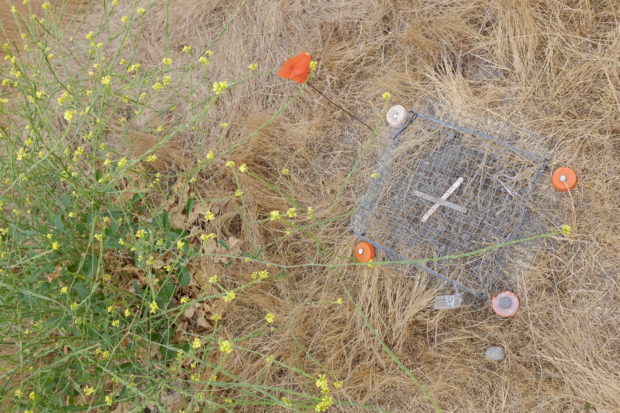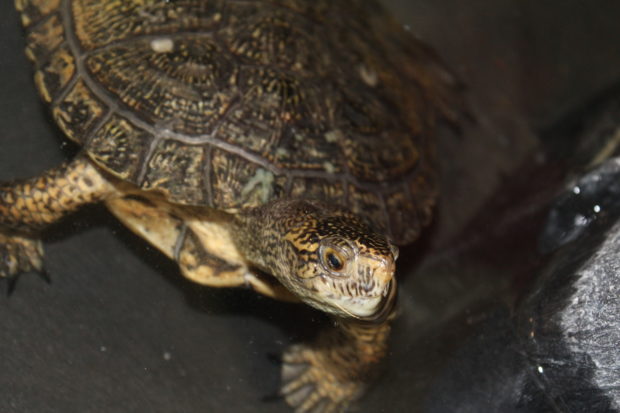By Keegan Curry, SPP Taylor’s Checkerspot Butterfly Program Coordinator

Two community service crewmembers from MCCCW transplant lettuce at the GRACE project.
I recently visited the Kitsap Conservation District (KCD) near Poulsbo, WA to learn more about their innovative GRACE project. GRACE is an acronym for Gardening for Restoration and Conservation Education. Each week, a community service crew from Mission Creek Corrections Center for Women (MCCCW) visits the KCD property and

The KCD offers assistance to landowners throughout the county to help improve their water and soil quality, along with managing other resources in the area.
tends a large vegetable garden that provides fresh produce to local food banks. This gives the incarcerated crew a chance to help those in need while gaining valuable skills in small-scale agriculture and farm management.
The project is coordinated by Resource Planner Diane Fish, whose background includes teaching Ag Entrepreneurship classes for WSU Kitsap County Extension. KCD initiated the GRACE project with a $50,000 grant from the National Association of Conservation Districts, with additional funding from the Washington State Conservation Commission.
“This is where it all happens,” said Diane as she led me through a hi-tunnel full of lush tomato plants. Beyond the tunnel lay several rows of mixed veggies, including onions, garlic, chard, kale, zucchini, yellow squash, collards, green lettuce, and more. It seemed like a diverse crop for such a small area! Shortly after my introduction to the garden, the crew from MCCCW arrived. Diane described their objectives for the morning and soon everyone had an assigned task, spade or shovel in hand.

Resource Planner Diane Fish coordinates the GRACE project, along with other KCD programs. She is an expert farm manager!
I spoke to the crew as they worked in pairs. “I didn’t know anything about gardening before I started coming here,” said one crewmember as she transplanted lettuce starts into carefully-spaced rows. “Now, I want to have my own garden at home once I get out.”
This sentiment was echoed by many women on the crew. They were also keen to mention that their labor was contributing to a good cause. Not only has the garden produced thousands of pounds of produce for local food banks, but the crew even planted a field of carving pumpkins that will be donated to food bank clients via vouchers; families who receive the vouchers can visit the KCD the week before Halloween and pick out their own jack-o-lantern free of charge!

A community service crewmember searches for the ripest zucchini.
MCCCW crews have worked on various KCD projects over the years including stream restoration for salmon recovery, native habitat revegetation, and other less glamorous conservation work. I spoke to Diane again after my visit and she emphasized that these crews “really are saving the world, a little bit at a time, in all the work they do for KCD.” The GRACE project was conceived as a way to enhance the KCD’s existing collaboration with MCCCW. This special initiative adds a meaningful service experience for the incarcerated gardeners while producing much-wanted, high-quality vegetables and herbs for local food banks.
By the end of July, 2018, the GRACE project had donated 4,356 pounds of fresh produce to Central Kitsap Food Bank, St. Vincent DePaul Food Bank, and the Bremerton Foodline. And in an exciting new development, the kitchen at MCCCW has agreed to take donations of produce that can be used for the prison cafeteria.
Thank you to Diane Fish and the KCD for giving me the grand tour, and for working with MCCCW to develop this project. And thanks to the incarcerated crew for getting soil between their fingers as they work to help communities in-need. Yet again, I am reminded of the transformative power of simply growing food.

A wide shot of the GRACE project farm, with MCCCW community service crewmembers harvesting produce for this week’s donations.

A running tally of donated pounds of produce for 2018. The year is only halfway over, and the GRACE project farm is designed to yield fresh produce year-round!

The day’s harvest begins to accumulate as community service crewmembers check on their progress. It’s satisfying to know that these bountiful crates of produce will provide nourishment for those in need.











































































